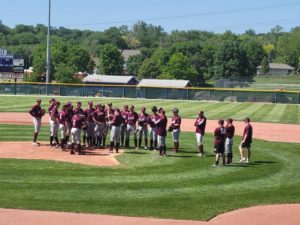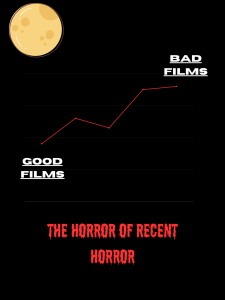Meg’s Monologue: Taking concussions more seriously
October 25, 2019
On Oct. 6, Steelers’ quarterback Mason Rudolph suffered what appeared to be a severe head injury during the third quarter of the Steelers’ 26-23 loss to the Ravens. He laid unconscious on the field for over a minute. Rudolph was then walked off the field, taken to a hospital and was placed on concussion protocol, a five phase recovery system for players suffering from concussions. The protocol includes phases such as rest and recovery, light aerobic exercise, continued aerobic exercise and strength training, football specific activities, and full football activity/clearance.
Rudolph missed the team’s Oct. 13 conference matchup against the Chargers, but having a bye week right after, many fans hope and expect to see Rudolph return to the field in their Oct. 28 game against the Dolphins. But, is two weeks really enough time to fully recover from a grade 3 concussion?
Bellevue West’s athletic trainer, Shannon Gier, said she believes injuries on the brain must be taken as seriously as possible.
“We only get one brain,” Gier said. “We want to make sure that all of our athletes are playing safe.”
At West, concussed athletes can only return to activity after completing each of the following requirements: evaluation by a licensed healthcare professional, written and signed clearance to resume athletic activity by the licensed healthcare professional, submission of the signed clearance to the school accompanied by written permission from a parent or guardian, and passed neurological testing.
After seeing the healthcare professional, athletes are placed on Return-to-Learn and Return-to-Play protocols, and must pass both protocols before returning to full activity.
Ready-to-Learn, the first phase for high school athletes, consists of modifying the athlete’s school schedule to help them return to full cognitive ability, which will vary from athlete to athlete. This might mean no quizzes or tests until asymptomatic, or extended amounts of work time for the athlete.
After passing Ready-to-Learn, Ready-to-Play protocol is enforced.
“Return to Play is a 5-day progression of activity,” Gier said. “If symptoms resume the process is stopped. Once the Return-to-Play protocol is completed they are allowed to return to activity.”
Gier also explained that concussed athletes at high school age can be prone to even worse brain damage, such as a fatal disease called Second Impact Syndrome.
“Second Impact Syndrome occurs when the brain swells rapidly, and catastrophically after a person suffers a second concussion before symptoms from an earlier one have subsided,” Gier said. “This second blow may occur minutes, days or weeks after an initial concussion, and even the mildest grade of concussion can lead to second impact syndrome.”
Such a fast recovery for Rudolph raises some concerns. Teams and fans are worried about getting that star player back into the game that they often overlook proper healing time, but rushing a concussed player back into the sport puts them at risk of worsening the head injury and inflicting more long-term injuries on the brain.
Obviously, one rough hit or one concussion won’t cause a worsened disease like Second Impact Syndrome, but allowing players to return to play before full recovery from concussions only puts them at risk. As many continue to wonder when Rudolph will return, keep in mind the severity of the concussion.
According to the Steelers’ weekly injury report, Rudolph returned to practice just days after taking two blows to the head and lying unconscious on the field for over a minute, classifying it as a grade 4 concussion. This means that Rudolph had already cleared three of the five phases of NFL’s concussion protocol, in a matter of three days.
According to Barrow Neurological Institute, three days isn’t nearly enough time for healthy recovery. “Athletes who lose consciousness for minutes should return to competition only after they have been asymptomatic at rest and during exertion for at least 2 weeks.”
I know I can’t be the only one concerned by Rudolph’s speedy recovery. The NFL’s concussion protocol should follow the same, strict protocol of high school and college. This way, teams don’t have to worry about players further worsening their concussions or enduring worse brain damage.
The damage these concussed players endure from brain trauma affect them for life, so missing games should not be the biggest concern.






